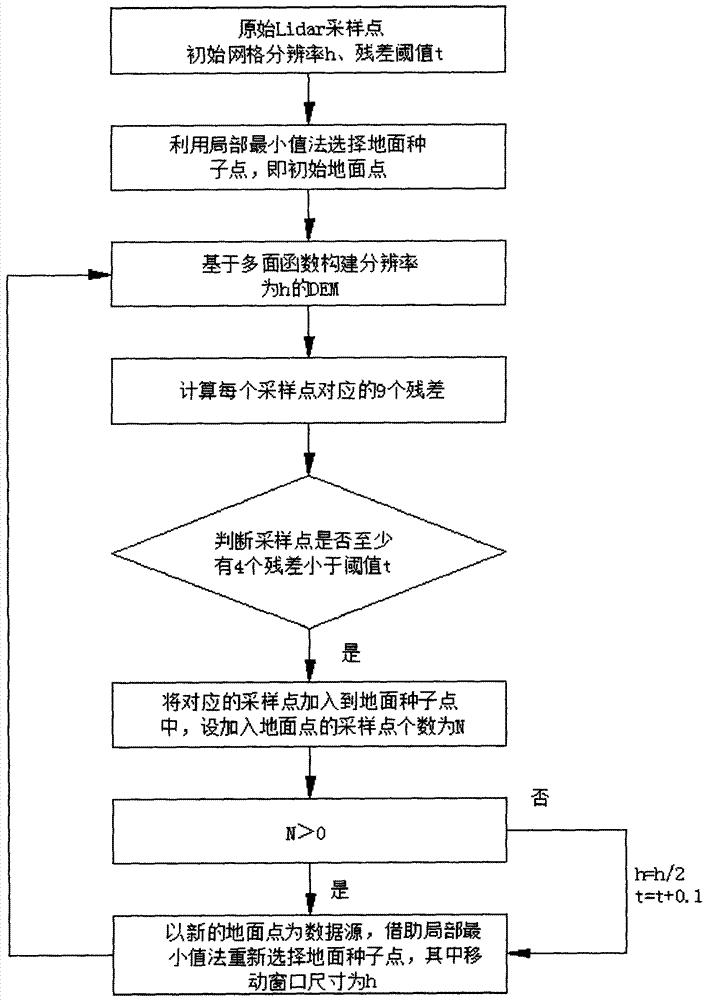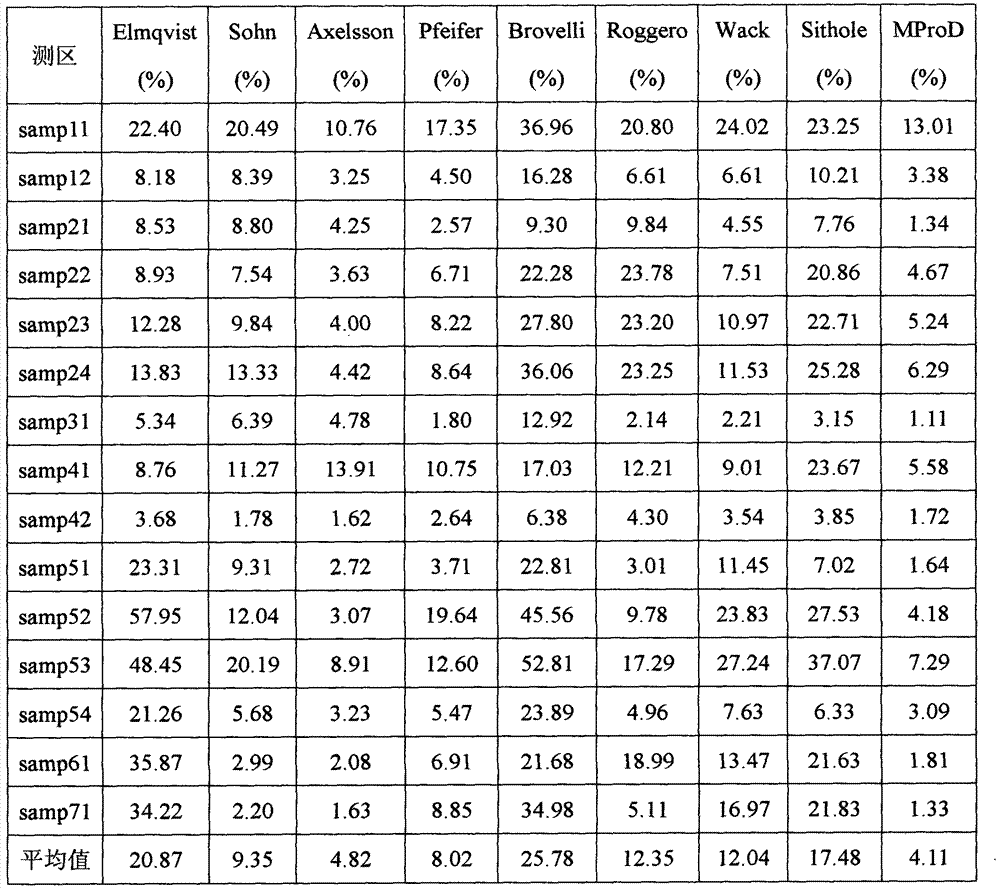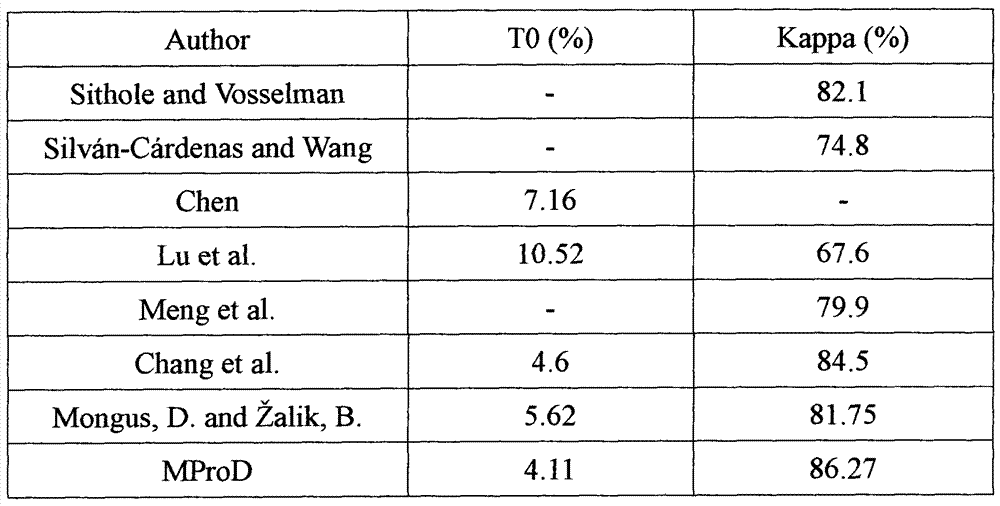Multiresolution multilayer successive point adding LiDAR (Light Detection and Ranging) filtering algorithm
A filtering algorithm and multi-resolution technology, which is applied in the field of multi-resolution and multi-layer LiDAR filtering algorithm, can solve the problem of low average calculation accuracy and achieve the effect of weakening the influence
- Summary
- Abstract
- Description
- Claims
- Application Information
AI Technical Summary
Problems solved by technology
Method used
Image
Examples
Embodiment Construction
[0017] 1 Principle of multi-resolution and multi-layer successive point-added filtering algorithm
[0018] This method includes three layers of filtering: in the initial layer, first select some ground points as seed points by the local minimum method, then construct a certain resolution DEM by multi-surface function, and finally calibrate the sampling points whose residual error is less than the set threshold as the ground point. Repeat the above process until convergence. In the subsequent layers, the DEM resolution and residual threshold are gradually increased, and the calculation process in the initial layer is repeated until no sampling point is marked as a ground point, then the iteration is stopped, and the ground point data is output. Assume that the resolution of the DEM grid generated by the initial layer of this method is h, the residual threshold is t, and the layer count N=1. The specific calculation steps are as follows:
[0019] (1) Firstly, in the initial l...
PUM
 Login to View More
Login to View More Abstract
Description
Claims
Application Information
 Login to View More
Login to View More - R&D
- Intellectual Property
- Life Sciences
- Materials
- Tech Scout
- Unparalleled Data Quality
- Higher Quality Content
- 60% Fewer Hallucinations
Browse by: Latest US Patents, China's latest patents, Technical Efficacy Thesaurus, Application Domain, Technology Topic, Popular Technical Reports.
© 2025 PatSnap. All rights reserved.Legal|Privacy policy|Modern Slavery Act Transparency Statement|Sitemap|About US| Contact US: help@patsnap.com



